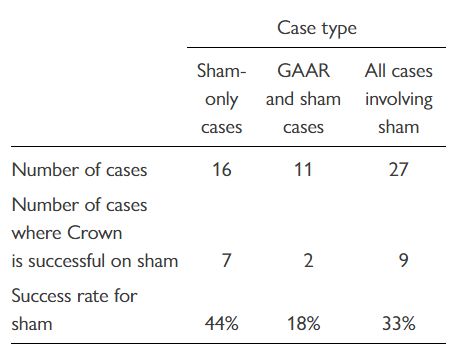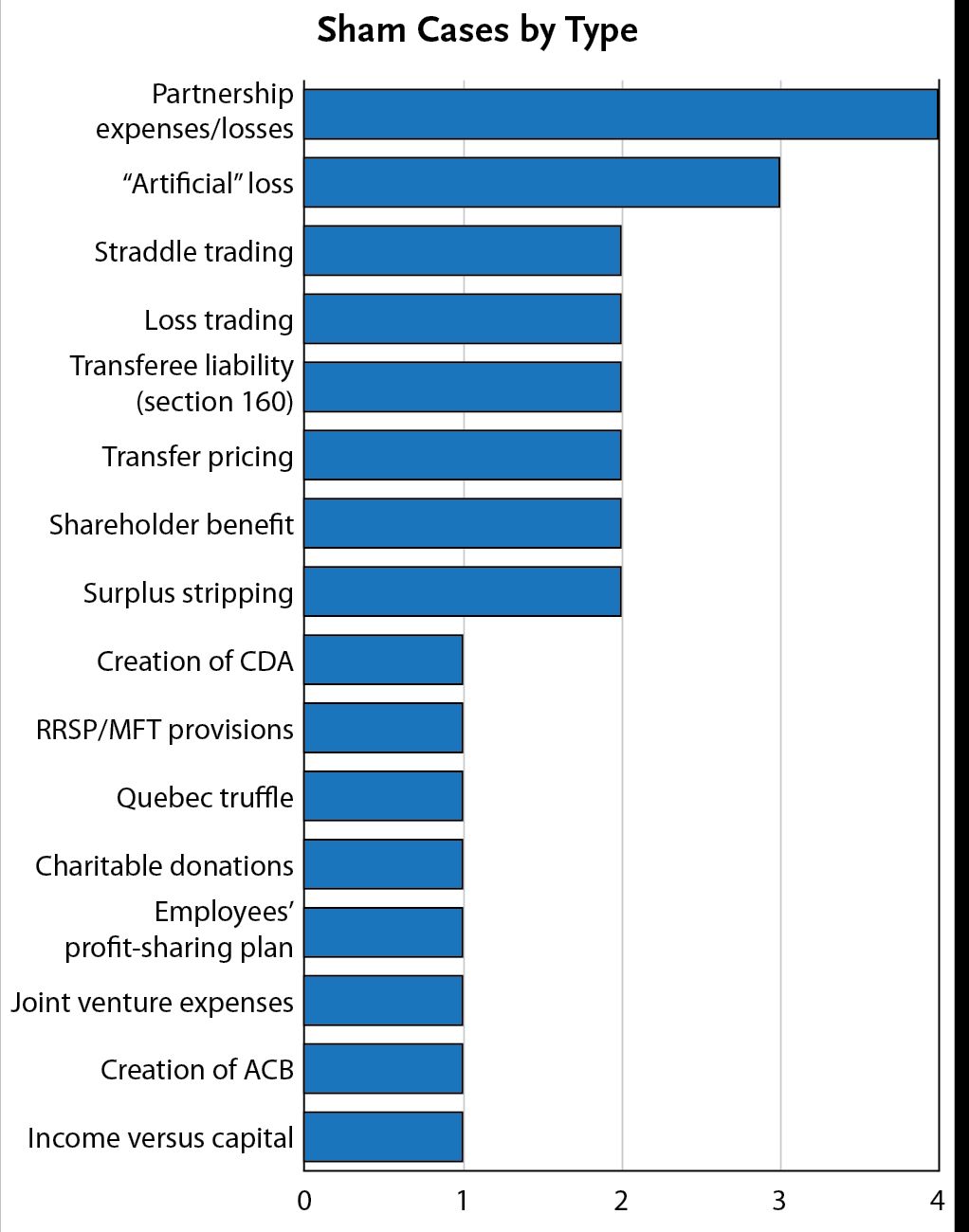- within Tax topic(s)
- with Senior Company Executives, HR and Finance and Tax Executives
- in United States
- with readers working within the Accounting & Consultancy industries
- with Finance and Tax Executives
- with readers working within the Accounting & Consultancy industries
According to Magren Holdings Ltd. v. Canada (2024 FCA 202, at paragraph 156), "a sham
exists when acts are done or documents are executed with the
intention of giving the appearance of creating legal rights and
obligations that differ from the actual legal rights and
obligations that the participants intend to create."
The CRA and the Crown have been accused by practitioners of
inappropriately treating sham as an alternative argument to GAAR in
support of reassessments. A statistical analysis sheds light on
four key questions in this regard: (1) Is sham a successful legal
argument for the Crown? (We measure success by the Crown by the
outcome at the final stage of the appeal process, if any.) (2) Is
sham a successful argument when combined with GAAR? (3) How
commonly is sham raised alongside GAAR (and vice versa)? (4) Is
sham argued more often in certain types of cases?
Canadian Abridgement Digests classifies judicial decisions
according to the issues addressed in each case. We used this source
to identify 99 cases in which sham, GAAR, or both sham and GAAR
were raised as issues. For this analysis, we examined the period
1988 to the present (the period during which GAAR has existed). A
supplementary table (which includes certain
explanatory notes) provides the underlying data. We examine two
overlapping subgroups of the 99 cases—one relating
predominantly to sham and one relating predominantly to GAAR.
To answer the first question—"Is sham a successful legal
argument?"—we examined the 27 cases in which sham is one
of the issues. In the accompanying table, we show that the success
rate for the Crown is 33 percent ([7 + 2]/[16 + 11]) in arguing
sham. However, this aggregate figure conceals an important
distinction that answers the second question: where both GAAR and
sham are raised, the Crown's success rate in arguing sham is
low (18 percent); in contrast, where the Crown argues sham alone,
the success rate is higher (44 percent).

Thus, the courts seem to be more open to accepting sham where
GAAR is not also raised. Perhaps the courts view the sham-GAAR
double argument as a last-ditch strategy that the Crown uses when
it does not have a truly persuasive argument to make.
The third question asks how commonly sham is raised alongside GAAR
(and vice versa). For this, we examine a second subgroup of the 99
cases: the 82 cases in which at least one of the issues is GAAR. We
find that sham was raised infrequently (in 12 percent of the cases,
calculated as 10/82). This is perhaps less often than practitioners
would expect. In contrast, in cases involving sham as one of the
arguments, it was common for the Crown to also raise GAAR (in 41
percent of the cases, calculated as 11/27).
The last question is whether the Crown's assertion of sham in
the 27 sham cases is concentrated in cases dealing with certain
subjects (loss trading, surplus stripping, manipulation of tax
attributes, etc.). Each case is assigned to a single category. The
graph shows that there did not appear to be any discernible
pattern, although sham appeared somewhat more frequently in cases
dealing with impugned partnerships and losses.

The author would like to thank Samantha Curry, Summer Student-At-Law, for her assistance writing this article.
Originally published by CTF FCF.
The content of this article does not constitute legal advice and should not be relied on in that way. Specific advice should be sought about your specific circumstances.

